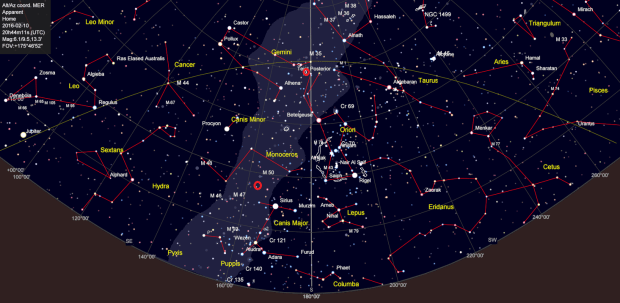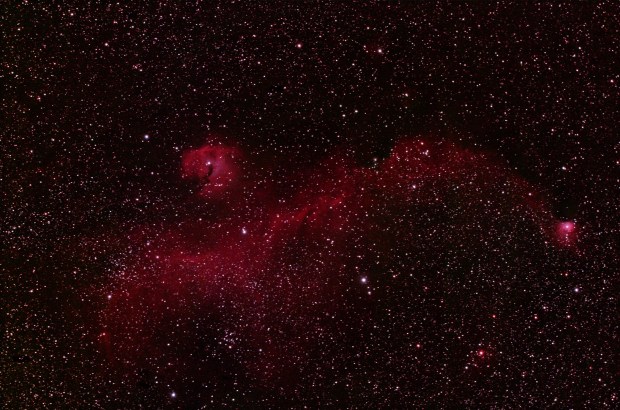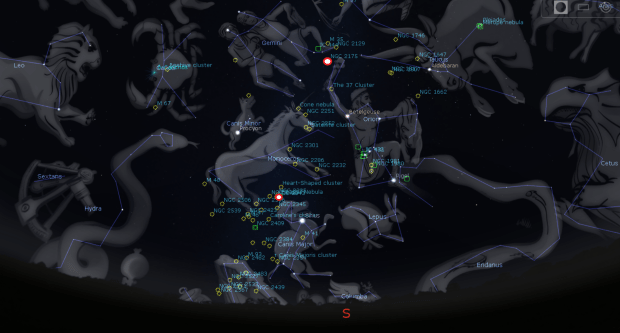
Asterisms of the night sky have long been the basis for astronomy, navigation, astrology, myths, general stories and even religion. Whilst over millennia their shapes inevitably change, on the scale of human life there is an element of permanence and certainty. With so many stars it is not difficult to ‘join-the-dots’ in order to arrive at a recognisable shape, thereby making identification easier. Simplest amongst these are the seasonal often geometric asterisms such as the Summer Triangle, Winter Hexagon and The Plough or Big Dipper. However, it is the 88 constellations that dominate our definition and description of the night sky.

Computer based planetarium usually trace the relevant shapes and often the underlying historical figures from which they were originally derived – though frankly in some cases these can be quite spurious and even misleading. Of the total constellations: 17 depict humans or mythological figures, 29 inanimate objects and a whopping 42 animals – the night sky might literally be described as something of a zoo!
Despite my cynicism the patterns can be very helpful when initially learning the night sky, as well as for navigating and descriptive purposes. When starting out in astronomy I deliberately did not purchase a GoTo mount in order to first better master the geography of the night’s celestial sphere. For this purpose I purchased a planisphere and to a degree (no pun intended) it did initially help but with so many stars, light pollution and the odd cloud it wasn’t always easy when it came to essential star identification and alignment. I am sure I will forever benefit from the effort but this is 2016 and inevitably I have succumbed to using Google Sky on my smartphone to identify or at least confirm a star’s identity. Equally inevitable, I now use an AZ-EQ6 GoTo mount, which when linked to the Cartes du Ciel planetarium software is a quick and powerful combination for locating and tracking objects.
As previously discussed, this winter has been unusually cloudy but I recently managed a rare though decent imaging session in which I was able to capture night animals of a different sort. Probably like most astronomers I find the mid-winter night sky to be the highlight of the year, making the aforementioned seeing problems all the more frustrating. I have already imaged various parts of everyone’s favourite, the Orion constellation and so this time was looking for alternative objects in a similar region that would be suitable for the William Optics GT81. Whilst I find many if not most of the star asterisms unconvincing, there’s no denying that some of the DSO shapes really do look like animals and this time I found two.

NGC 2174 or the Monkey Head Nebula is located within the Milky Way, between Orion’s club and Castor’s left foot. An HII emission nebula, with an apparent magnitude of +6.8 and 40’ apparent dimension, it was a good target and a very convincing monkey’s head. Closer inspection of the image shows another smaller HII nebula north above NGC 2174 called Sh2-247, that is not only connected to the monkey but they are both part of the even larger GEM OB-1 molecular cloud complex which covers a massive region of 570 x 770 light-years!

NGC 2174 & Sh2-247 nebula above. WO GT81 & modded Canon 550D + FF | 20 x 180 sec @ ISO 1,600 | 10th February 2016

NGC 2174 The Monkey Head Nebula, cropped & inverted
In addition, situated between the constellations of Canis Major and Monoceros is IC 2177 the Seagull Nebula, which is also within the Milky Way but ‘flying’ lower than the Monkey Head Nebula to the left (south-east) of the Orion. More than 2.5o from wing to wing, a number of bright star clusters are associated with this emission nebula, notable of which is the ‘bird’s head’ designated NGC 2327; IC 2177 is also known as the Parrot’s Head Nebula, which given the form of NGC 2327 I’m inclined to prefer.

IC 2177 The Seagull Nebula. WO GT81 & modded Canon 550D + FF | 20 x 180 sec @ ISO 1,600 | 10th February 2016
I’ve previously imaged a number of other animal-like DSO objects: Jellyfish Nebula, Crab Nebula, Pelican Nebula and the famous Horsehead Nebula. Unlike the constellations they generally but not always, really do resemble the form their names imply. Now adding to this list the Monkey Head and Seagull (Parrot) Nebulae it sometimes seems like a safari rather than astronomy!


Pingback: Reflections – 2016 | WATCH THIS SPACE(MAN)
Pingback: Monkey Business | WATCH THIS SPACE(MAN)
Pingback: Avian Astronomy: Seagull Nebula | WATCH THIS SPACE(MAN)